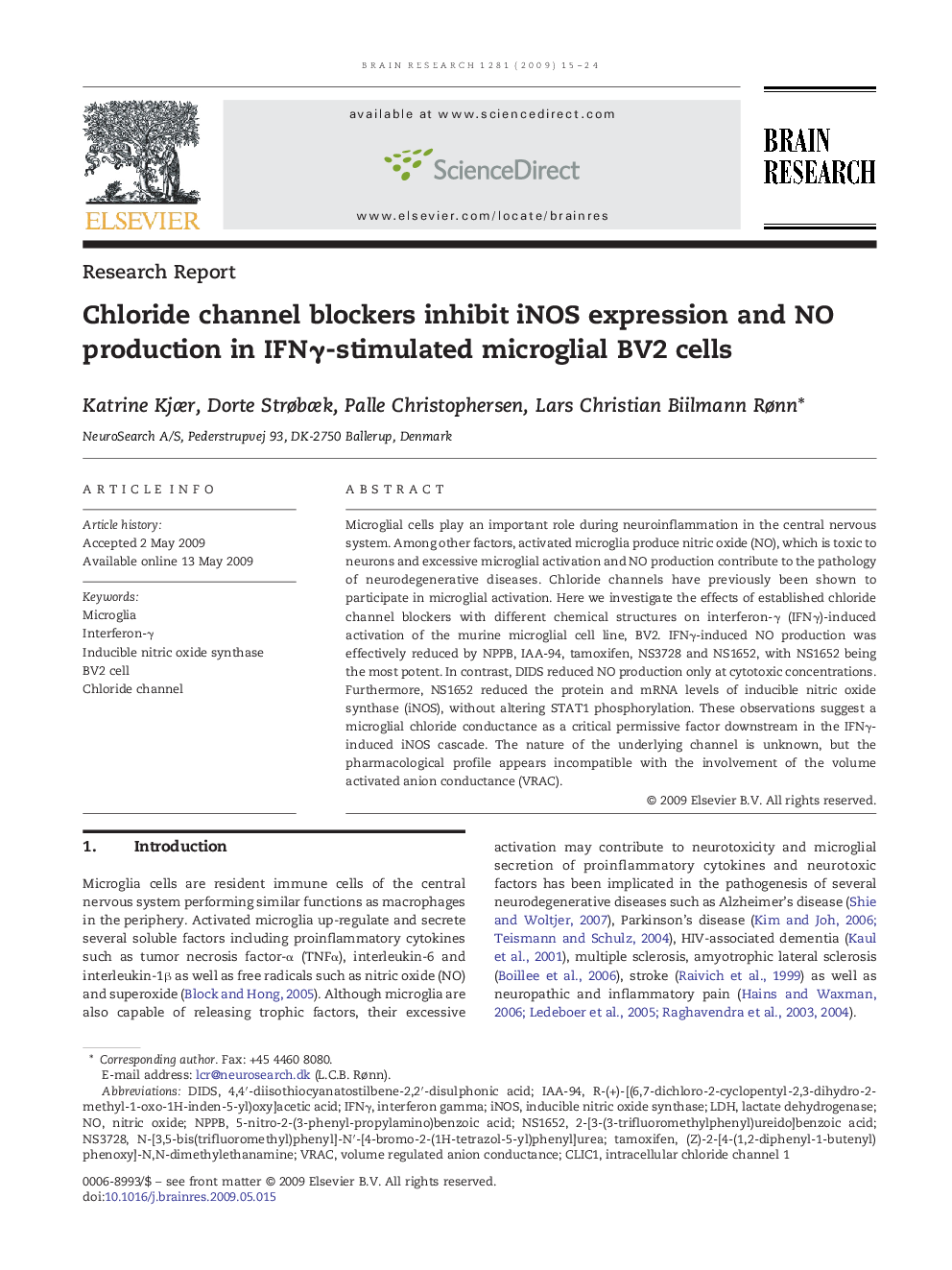| Article ID | Journal | Published Year | Pages | File Type |
|---|---|---|---|---|
| 4328150 | Brain Research | 2009 | 10 Pages |
Microglial cells play an important role during neuroinflammation in the central nervous system. Among other factors, activated microglia produce nitric oxide (NO), which is toxic to neurons and excessive microglial activation and NO production contribute to the pathology of neurodegenerative diseases. Chloride channels have previously been shown to participate in microglial activation. Here we investigate the effects of established chloride channel blockers with different chemical structures on interferon-γ (IFNγ)-induced activation of the murine microglial cell line, BV2. IFNγ-induced NO production was effectively reduced by NPPB, IAA-94, tamoxifen, NS3728 and NS1652, with NS1652 being the most potent. In contrast, DIDS reduced NO production only at cytotoxic concentrations. Furthermore, NS1652 reduced the protein and mRNA levels of inducible nitric oxide synthase (iNOS), without altering STAT1 phosphorylation. These observations suggest a microglial chloride conductance as a critical permissive factor downstream in the IFNγ-induced iNOS cascade. The nature of the underlying channel is unknown, but the pharmacological profile appears incompatible with the involvement of the volume activated anion conductance (VRAC).
